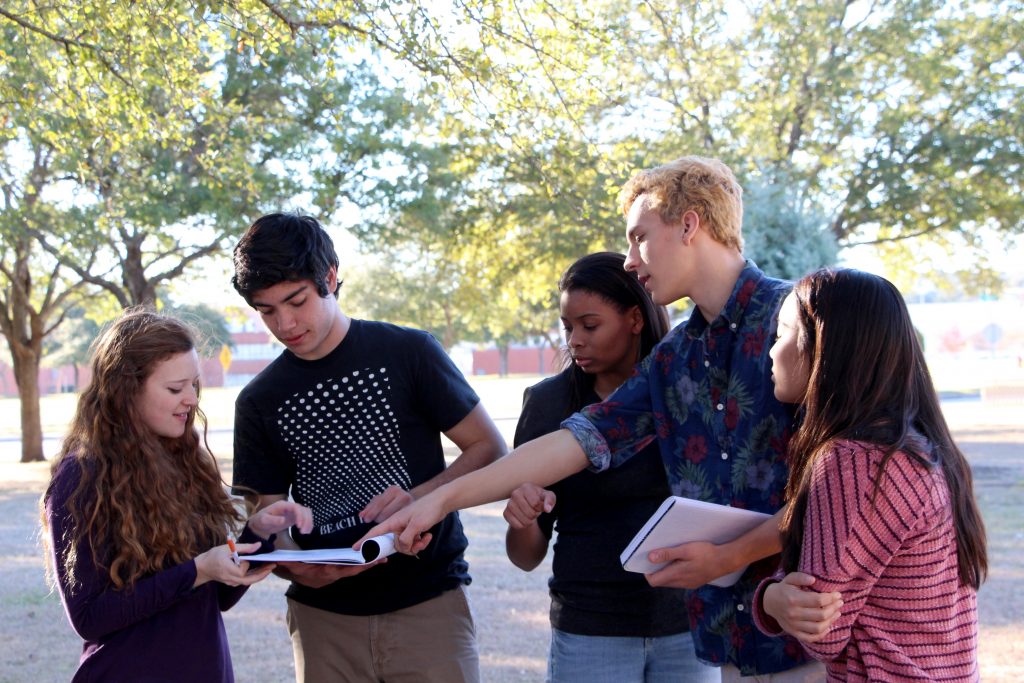Engineer Your World
Impact
Engineer Your World (EYW) has successfully prepared more than 400 high school educators to teach project-based engineering courses. More than 26,000 students have taken an EYW course since the program’s inception in 2011. Forty-five percent of students completing EYW I plan to major in engineering in college, and 60 percent express an interest in an engineering career. With growing partnerships, Engineer Your World plans to empower even more educators and inspire many more of tomorrow’s problem solvers.

Contact
Cheryl FarmerDirector of Precollege Engineering Education Initiatives
Accomplished
- Need Accomplished
- Evaluation Accomplished
- Sustainability Accomplished
- Replication & Scalability Developing
- Partnerships Developing
- Capacity Accomplished
- Challenging & Relevant Content Accomplished
- STEM Practices Accomplished
- Inspiration Accomplished
- Under-Represented Groups Developing

We envisioned Engineer Your World as a way to inspire young people to experience the creative side of engineering and its potential to shape our world without sacrificing the rigor that prepares them for success in STEM studies and careers. After years of collaborative course development and classroom testing, Engineer Your World has fulfilled this vision.
The University of Texas at Austin
Design Principles
The programs in this database clear a high bar. STEMworks reviewed each program against the Design Principles for Effective STEM Philanthropy. Programs must be Accomplished () across all Design Principles, or be Developing (
) in a maximum of three areas.
Overarching Principles
-
Need Accomplished
Identify and target a compelling and well-defined need.
-
Evaluation Accomplished
Use rigorous evaluation to continuously measure and inform progress towards the compelling need identified.
-
Sustainability Accomplished
Ensure work is sustainable.
-
Replication & Scalability Developing
Demonstrate replicability and scalability.
-
Partnerships Developing
Create high impact partnerships.
-
Capacity Accomplished
Ensure organizational capacity to achieve goals.
STEM Principles
-
Challenging & Relevant Content Accomplished
Offer challenging and relevant STEM content for the target audience.
-
STEM Practices Accomplished
Incorporate and encourage STEM practices.
-
Inspiration Accomplished
Inspire interest and engagement in STEM.
-
Under-Represented Groups Developing
Identify and address the needs of under-represented groups.
Program Overview
Engineer Your World (EYW) is transforming how engineering is taught in high schools across the United States and beyond. Developed by a team at The University of Texas with support from the National Science Foundation, EYW provides exceptional teacher training and support programs along with comprehensive instructional materials that are designed to engage ALL students in meaningful engineering experiences. EYW I: Engineering Design and Analysis is a hands-on, design-based, inquiry-focused engineering course where students explore mechanical, chemical, civil, electrical, and aerospace engineering through a series of socially relevant design challenges. In this course, students discover the engineering design process, make data-driven decisions, and work in multi-level teams to solve complex challenges. The combination of minimal prerequisites and optional dual enrollment credit allows this course to be accessible by all students in grades 9-12, while also providing additional layers of difficulty for those seeking an extra challenge. EYW II: Engineering Applications of Computer Science is an engineering course that engages students in programming and computational thinking to solve hands-on design challenges. Students build on the skills and habits of mind that they developed in EYW I to solve more technically challenging projects at the intersection of engineering and computer science. Guided by a dedication to broadening participation in engineering and computing, the design challenges in both courses are crafted to illustrate how engineering can improve people’s lives and health, conserve resources, and enable creativity in the arts. EYW’s exceptional teacher support programs are based on the nationally recognized UTeach teacher development model and aligned with published standards of excellence for K-12 engineering professional development. Our two-pronged approach begins with a transformative two-week professional development institute that engages teachers in authentic engineering practices and models effective teaching practices for project-based instruction and continues with comprehensive ongoing support that includes outreach from staff engineers and instructional support specialists, membership in virtual and real-life communities of practice, and access to online platforms that support peer-to-peer sharing of best practices.
Funders and Partners
Engineer Your World grew out of the UTeachEngineering project at The University of Texas at Austin. Originally funded by the National Science Foundation’s (NSF) Math and Science Partnership program, UTeachEngineering has been a leading innovator in the field of secondary engineering education since 2008. UTeachEngineering collaborators have included the Cockrell School of Engineering, UTeach Natural Sciences, The University of Texas System, the AT&T Foundation, and NASA. Current partners include Cornell University, the University of Iowa, and the NSF-funded CISTAR program.